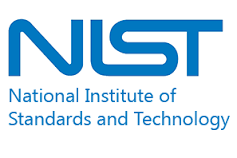attack surface
See the following -
How Cyber Hardening Can Protect Patient Privacy And Treatment
 The abundance of internet-connected devices that collect and share patient data has greatly increased the “attack surface” (where an attacker inserts or extracts data) and number of possible vulnerabilities within a system. Now that medical devices can connect to home-based routers, public Wi-Fi or cellular networks to relay data to hospitals, specialists, and care providers. In addition, the software in those devices lacks cybersecurity and can be updated and reprogrammed remotely. Thus, sensitive patient information is even more prone to data breaches, and the safety of the devices can be compromised. Recent supply chain compromises, and the migration of health applications and platforms to the cloud, also add to the threat equation. This article looks at why the medical community is so vulnerable and suggests how it can better protect life-saving equipment and sensitive data from unprecedented cyberattacks.
The abundance of internet-connected devices that collect and share patient data has greatly increased the “attack surface” (where an attacker inserts or extracts data) and number of possible vulnerabilities within a system. Now that medical devices can connect to home-based routers, public Wi-Fi or cellular networks to relay data to hospitals, specialists, and care providers. In addition, the software in those devices lacks cybersecurity and can be updated and reprogrammed remotely. Thus, sensitive patient information is even more prone to data breaches, and the safety of the devices can be compromised. Recent supply chain compromises, and the migration of health applications and platforms to the cloud, also add to the threat equation. This article looks at why the medical community is so vulnerable and suggests how it can better protect life-saving equipment and sensitive data from unprecedented cyberattacks.
- Login to post comments
NIST to Release New Guidance for Strengthening Hospital Cybersecurity
 The National Institute of Standards and Technology is poised to deliver new cybersecurty guidance, according to NIST fellow Ronald Ross. NIST offers a security framework that was developed for the federal government that helps organizations understand, select and implement security controls. Ross likened the NIST framework, developed for the federal government under the Federal Information Security Modernization Act, to a very large catalog of privacy and security controls to safeguard the enterprise form hostile cyberattacks...
The National Institute of Standards and Technology is poised to deliver new cybersecurty guidance, according to NIST fellow Ronald Ross. NIST offers a security framework that was developed for the federal government that helps organizations understand, select and implement security controls. Ross likened the NIST framework, developed for the federal government under the Federal Information Security Modernization Act, to a very large catalog of privacy and security controls to safeguard the enterprise form hostile cyberattacks...
- Login to post comments